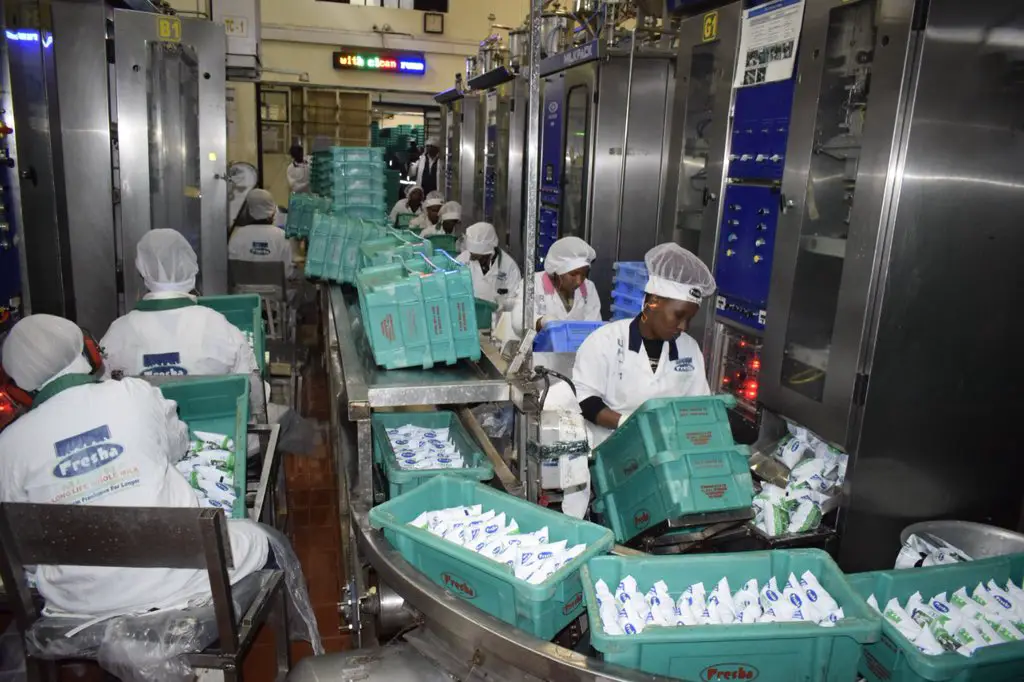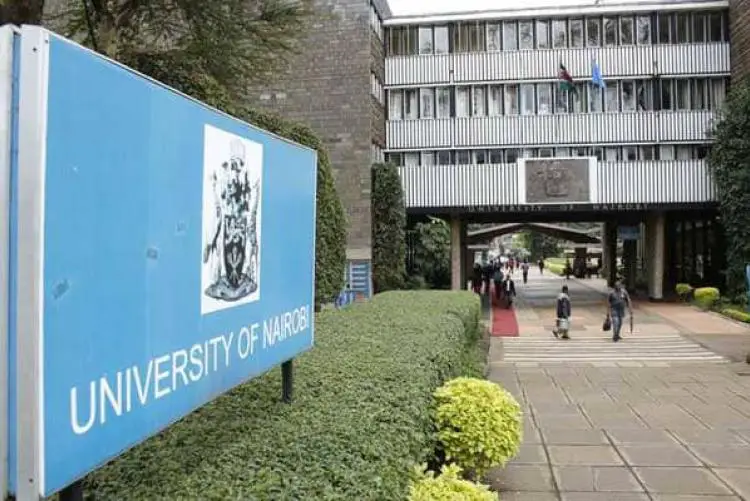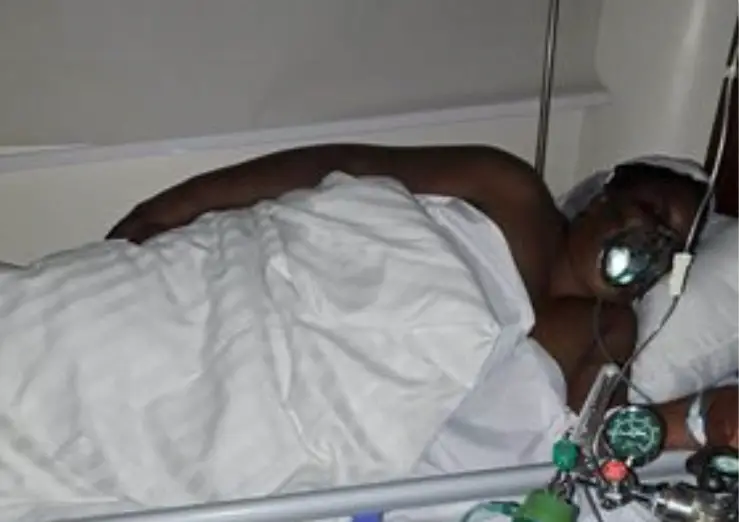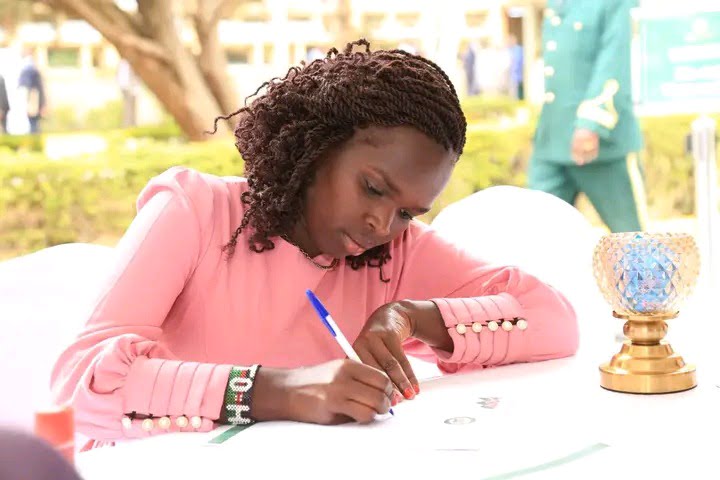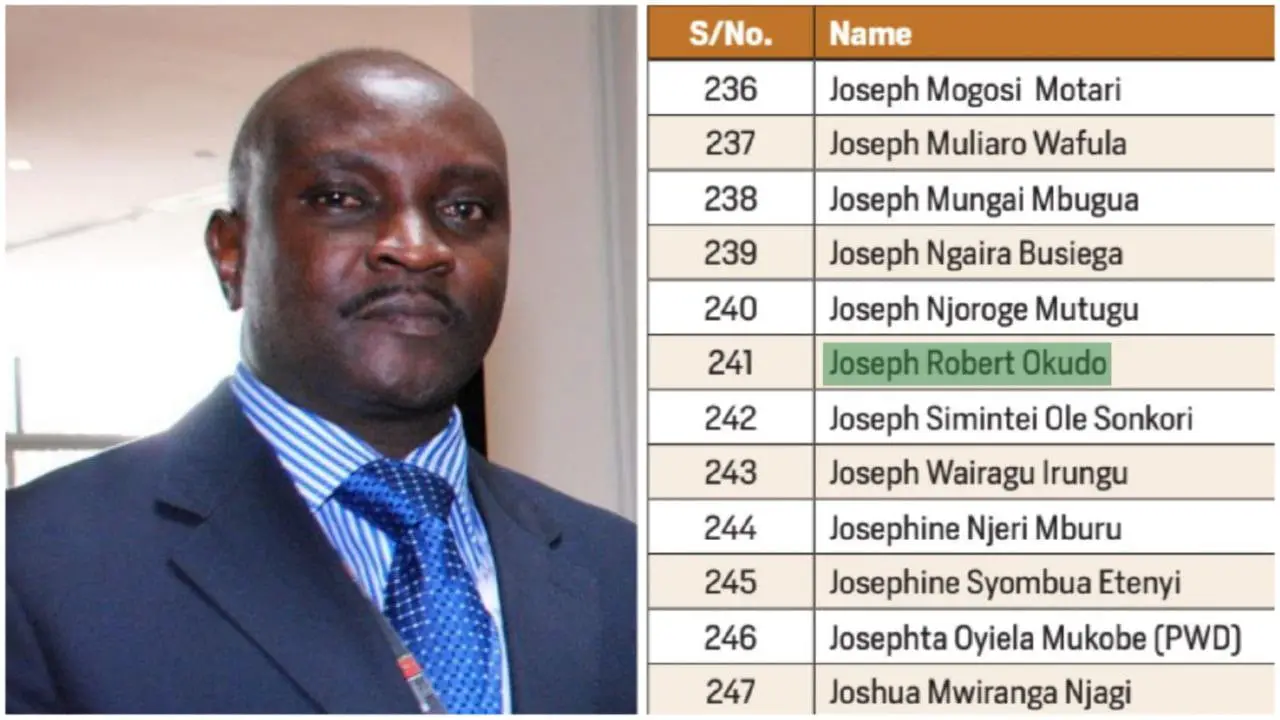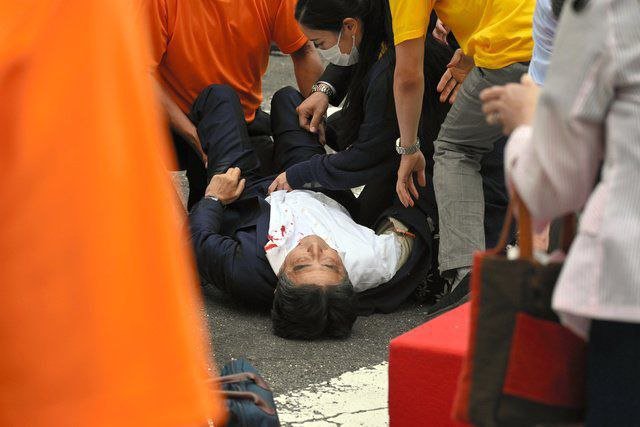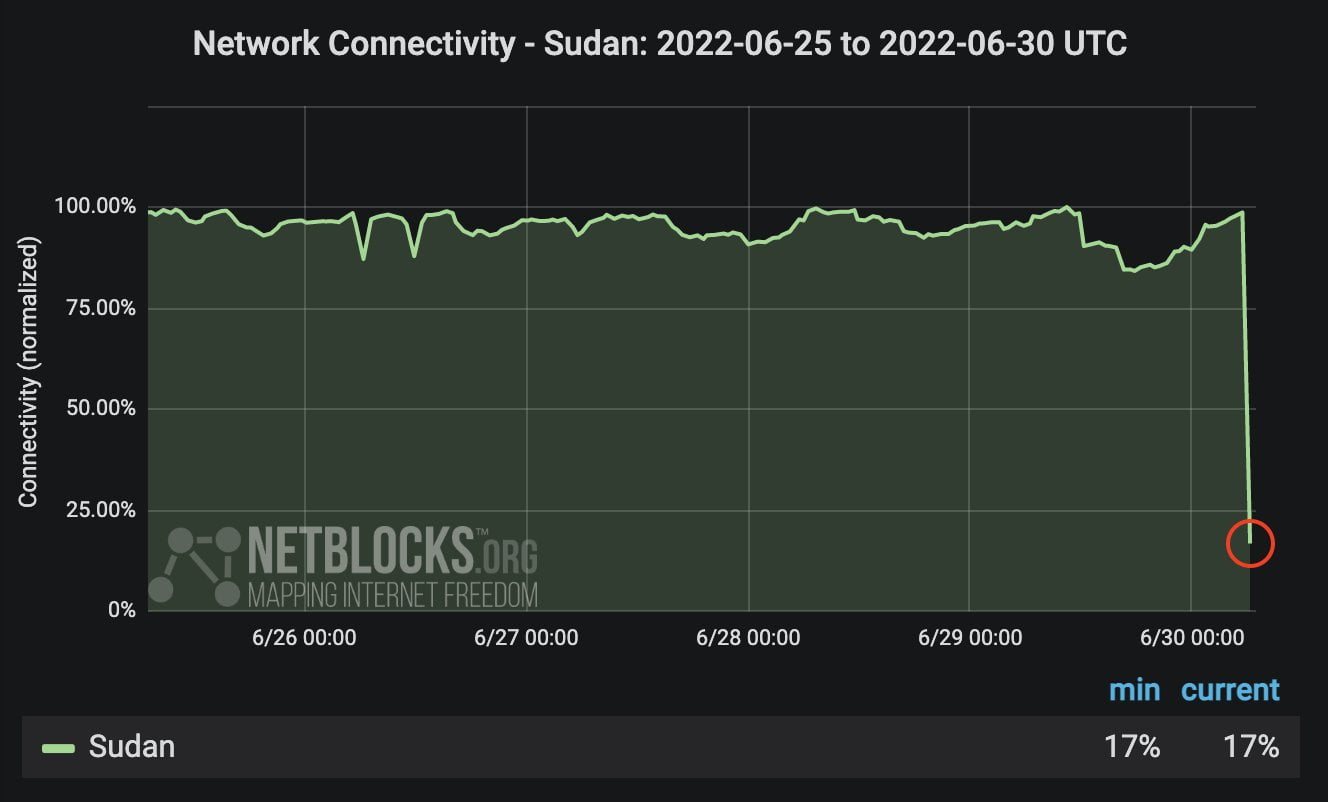[ad_1]
Hong Kong protester Kevin bandages up the scratches he sustained while trying to escape down a filthy drainage pipe on the campus of his alma mater, Hong Kong Polytechnic University.
Surrounded by hundreds of police, the industrial-style complex in Hong Kong’s Kowloon district has been under siege since last Sunday.
While hundreds of protesters have managed to escape, Kevin and dozens of others remain trapped. They have tried every possible escape route — from rappelling by rope off bridges to cutting wire fences — but have failed, thwarted at every turn by police armed with tear gas and rubber bullets.
“I am afraid for my family, and I’m afraid people will die, my friends,” said Kevin, who works as a researcher with a financial institution. The 25-year-old, who did not want his real name used in order to protect his identity, does not know if he still has a job to go back to or even how long he has been stuck here. “Since Tuesday [November 12] maybe — I forgot, I haven’t been counting the days.”
The FT has spoken to multiple people still trapped inside the fire-blackened campus, the site of the longest and most extreme of a series of sieges at Hong Kong’s universities over the past two weeks.
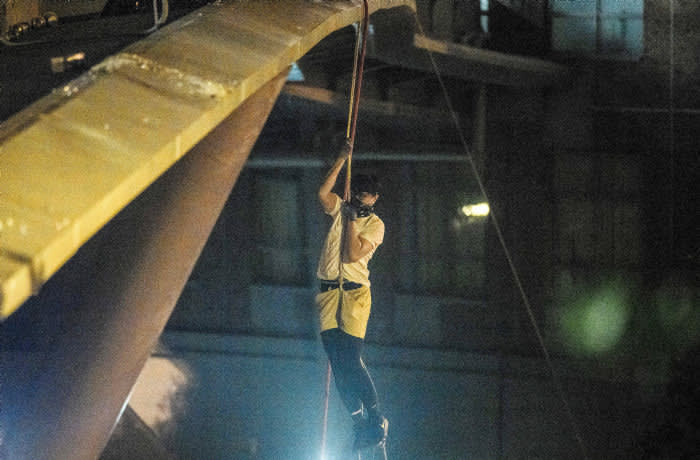
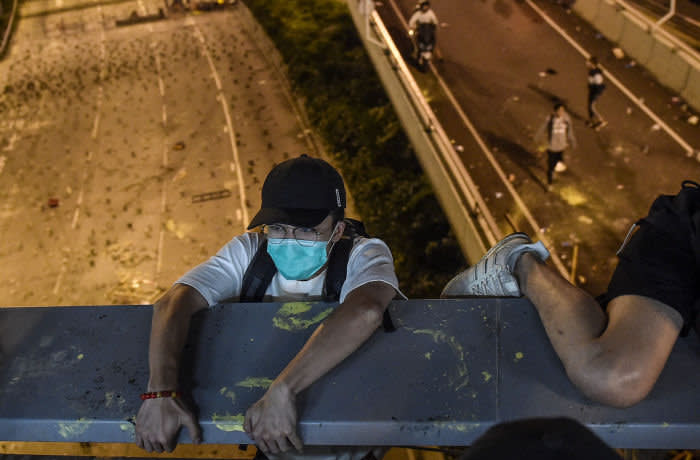
The stand-offs mark a pivotal moment in the city’s five months of anti-government protests, analysts say, representing a change in the protesters’ tactics. Until now, their motto had been “Be water” — challenge the police, then fade away rather than stand and fight. But over the past week, at least 700 people have been arrested in PolyU as protesters have stood their ground. Even some supporters of the movement believe this has been a mistake.
The transport chaos wrought by the sieges prompted a police warning that the Asian financial hub was on the “brink of total collapse”. It may also have hurt public support for the movement, with schools closing and mainland Chinese students fleeing the territory, analysts say. “I think this was a turning point,” said Ivan Choy, a political scientist at the Chinese University of Hong Kong.
The university sieges began after demonstrations against the shooting of a protester. Students at the Chinese University of Hong Kong and PolyU blocked highways near their campuses, key transport arteries in the territory. Until now, police have not entered universities, but last week they targeted them.
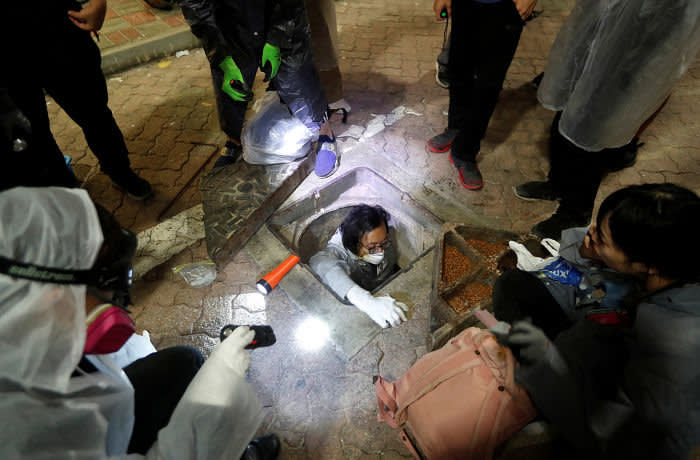
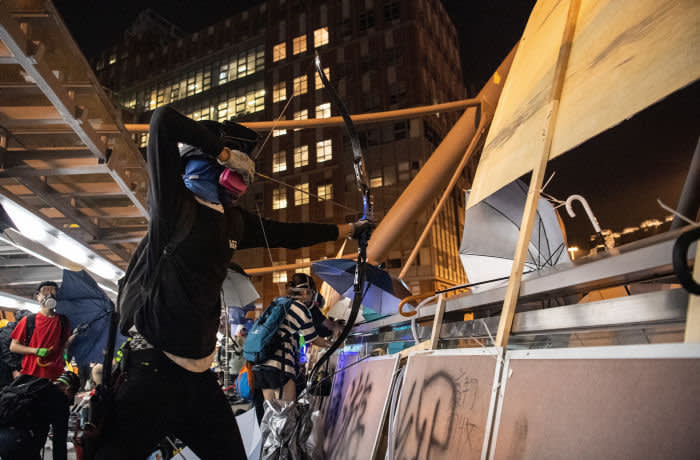
At first, protesters at PolyU kept police at bay using giant catapults and bows and arrows, shooting one officer in the leg.
Kevin and his friends only narrowly escaped riot police who were firing pepper balls — non-lethal projectiles that sting on impact — at close range by punching through a window.
“Some kids, some little girls, were just lying beside me, we all were suffocating and we just all lay down, begging them [the police] to stop . . . I just heard them laugh,” he said.
Protesters tried to escape by rappelling out of the campus. About 100 protesters abseiled down to waiting motorbikes but police said they arrested 37 of them. Kevin was forced to retreat before his turn came.
The FT gained access to the site for a few hours this week.
The university’s entrance was barricaded with cupboards, classroom chairs, tables and doors and the canteen reeked of putrefied food. Most of those still inside were terrified of arrest — rioting in Hong Kong carries up to 10 years in jail. Part of the campus looked like a Molotov cocktail factory. Hundreds of Perrier and beer bottles were filled with a yellow liquid. “I sleep in different buildings and classrooms everyday for safety,” said Rance, a skinny 17-year-old sitting with his friends.
Some did manage to get out. Stephanie, a 21-year-old student and veteran protester with a huge welt on her leg from an altercation at a protest in September, escaped arrest but remains traumatised.
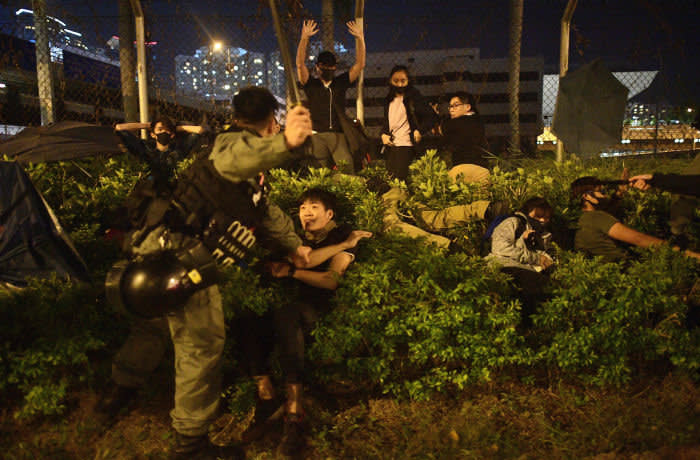
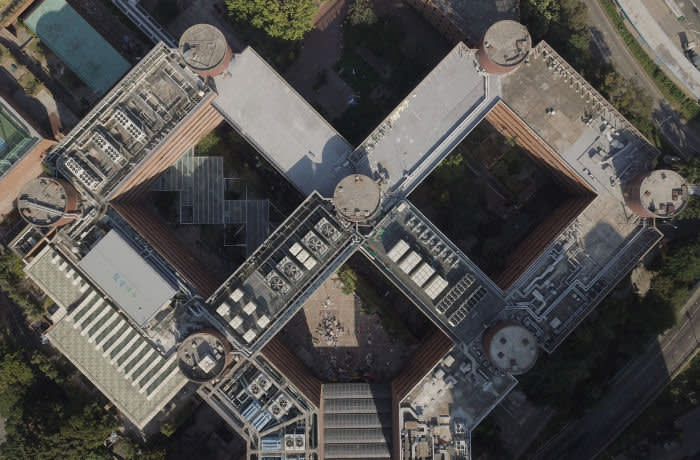
The worst thing about being inside was the noise, she said. Stephanie recalls hiding in a small room when the fire alarm went off, while outside police used what she thought were stun grenades and a long-range acoustic device to intimidate the protesters. They also blasted songs into the campus about life in jail.
Her priority during the siege was to protect two underage protesters, a 12-year-old boy and 15-year-old girl, who had been severely injured by a tear gas canister. Eventually she got them out.
Analysts said local elections this Sunday might provide the first real indication of what impact the sieges, and the protest movement as a whole, have had on public opinion. “These elections maybe in a way will offer something of a reset,” said Antony Dapiran, a Hong Kong-based corporate lawyer. “Assuming that they happen in an incident-free way, they will be a very indisputable and objective measure in a way of how Hong Kong feels.”
While the overall anti-government movement shows no sign of abating, the mood among protest groups online is downbeat. The PolyU siege did more to hurt the movement than help it, Stephanie said. “I realised at PolyU, we can’t win this revolution,” she said.
[ad_2]
Source link






